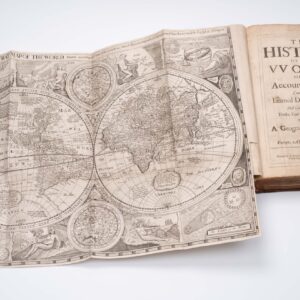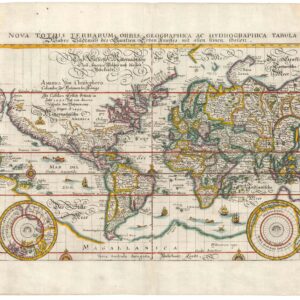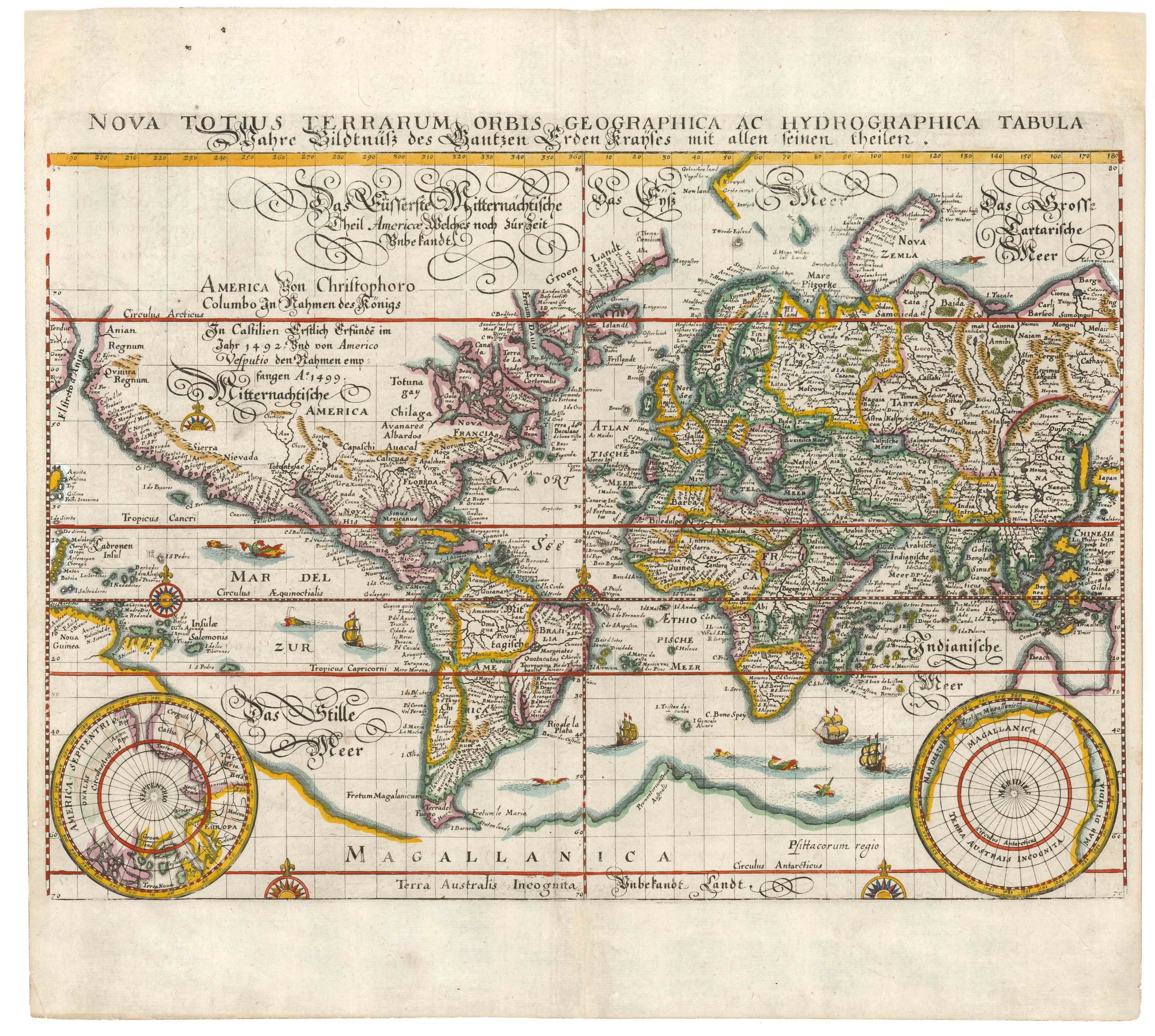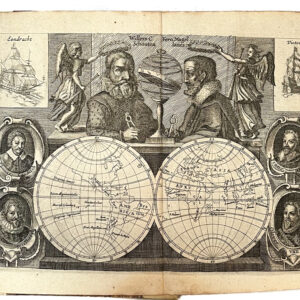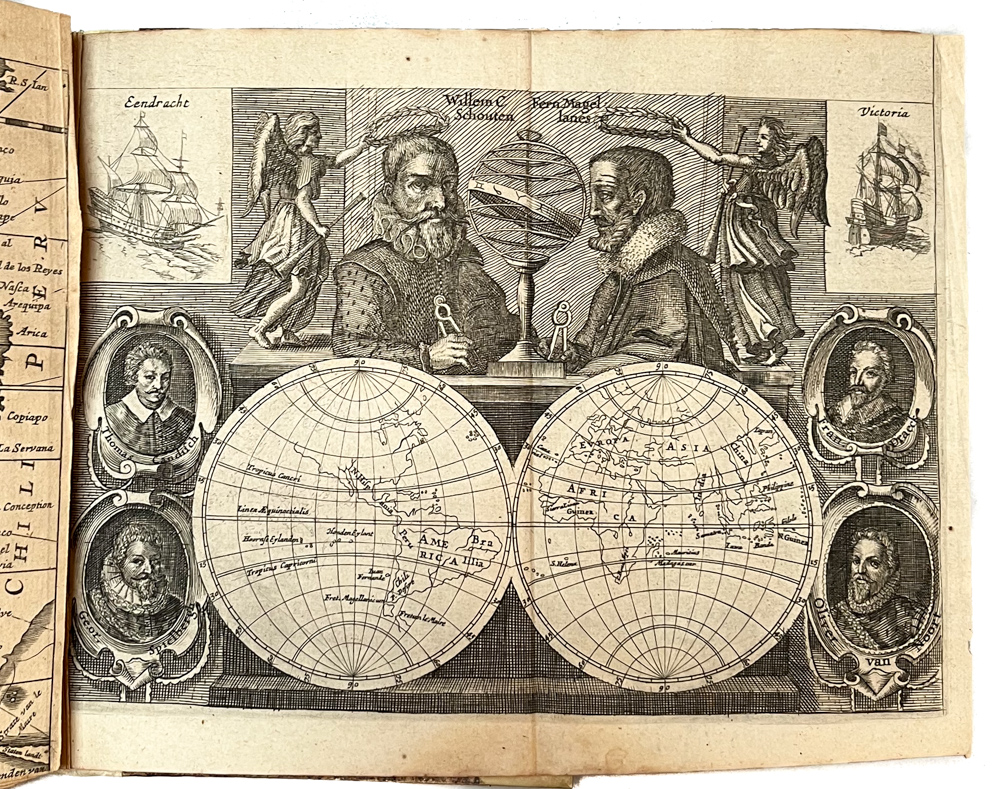John Speed’s unparalleled map of the world.
A New and Accurat Map of the World Drawne according to ye truest Descriptions latest Discoveries & best observations yt have beene made by English or Strangers. 1651.
Out of stock
Description
The preeminent English mapmaker of the mid-17th century was John Speed, and among his prolific output no map has attained the exalted status of his acclaimed world map from 1651.
There are many reasons why this map has become an icon in the world of map collecting and scholarship:
- It is one of the first world maps compiled by an English mapmaker and published in English.
- It offers an incredible amount of detail, which not only made it very progressive and up-to-date, but reflected the competence and resourcefulness of the mapmaker.
- And then there is the simple fact that is comes from the hand of John Speed; one of the most important and seminal figures in the history of English cartography.
The map is a beautifully constructed double hemisphere, which combines the finest traditions of English and Dutch mapmaking to create one of the most celebrated aesthetic charts of the age. Surrounding the two hemispheres we find the abundant ornamentation for which 17th century maps were famous, but in this case we have a wonderful example of the transition from one aesthetic to another. Thus we find the map itself rife with decorative features like sea monsters and ships, which are more reminiscent of late 16th and early 17th century traditions.
But traditional motifs in this map they have been reduced significantly in size and detail, and now it is especially the margins around the two hemispheres that contain the most elaborate decorative elements. These include mythological, cosmographical, and scientific scenes, as well as ample references to the age of exploration in which this chart was produced. Perched between the two terrene hemispheres we find two smaller globes with celestial charts for the Northern and Southern Hemispheres respectively. This contrast between northern and southern hemispheres in the heavens, and eastern and western hemispheres on the map, is but one the many elegant juxtapositions in Speed’s chart.
Among the abundant important cartographic details, we find one of the first renditions of the pioneer settlement of New Plymouth, as well as very early depictions of both California and Korea as islands. The map also includes quasi-mythological features such as the island of Frisland off Greenland and the Straits of Anian in the Pacific Northwest. At the bottom of both hemispheres we see an enormous unexplored continent, which in the western hemisphere has been labeled MAGALLANICA in reference to Ferdinand Magellan’s famous circumnavigation of the earth.
Circumnavigation is generally a theme in this early world map. In addition to the toponymic references to Magellan, we find him among a series of four portraits of 17th century explorers. Other than Magellan we find Sir Francis Drake, who raided the Spanish settlement in America and escaped retribution by unexpectedly crossing the Pacific; we find the privateer and explorer Thomas Cavendish, who deliberately tried to copy the feat pulled off by Drake; and then there is the merchant pirate Oilver van der Noort, who was the first Dutchman to sail around the earth.
Cartographer(s):
John Speed (1552-1629) was a prominent English mapmaker and historian operating in the late 16th and early 17th centuries. Born in Farndon, Cheshire, Speed’s interest in maps and geography led him to establish himself as a successful mapmaker and publisher in London. He gained widespread recognition for his detailed and beautifully illustrated maps of various regions, earning him the sobriquet “the leading London cartographer” of the Baroque period.
One of Speed’s most notable works is The Theatre of the Empire of Great Britaine, published in 1611. This ambitious atlas consisted of detailed maps of counties and cities across England, Wales, Scotland, and Ireland, accompanied by historical descriptions and genealogical tables. The atlas was not only a cartographic achievement but also a significant historical record of the British Isles during that era. Speed’s maps were praised for their accuracy and artistic flair, often featuring decorative elements and engravings of notable landmarks and figures. When it came to Britain’s colonial aspirations, Speed was instrumental in visualizing the empire cartographically.
Both during his life and after it, John Speed’s maps enjoyed widespread popularity and were sought after by nobility and scholars alike. Speed reached the ripe age of 77, and his maps were re-published for more than a century after his death. His legacy as a key figure in the development of English cartography endures to this day.
Condition Description
Slight mat stain outside the image.
References
John Leighly, California as an Island: An Illustrated Essay (San Francisco: Book Club of California, 1972); Glen McLaughlin with Nancy H. Mayo, “The Mapping of California as an Island: An Illustrated Checklist,” California Map Society Occasional Papers, 5 (1995); Dora Beale Polk, The Island of California: A History of the Myth (Spokane: Arthur H. Clark Company, 1991); Seymour I. Schwartz with Ralph E. Ehrenberg, The Mapping of America, (Edison, N.J.: Wellfleet, 2001); Rodney W. Shirley, The Mapping of the World: Early Printed World Maps, 1472-1700, 4th ed (Riverside, CT: Early World Press, 2001): map 317; Lawrence C. Wroth, "The Early Cartography Of The Pacific," The Papers of the Bibliographical Society of America 38 (1944): 87.
















